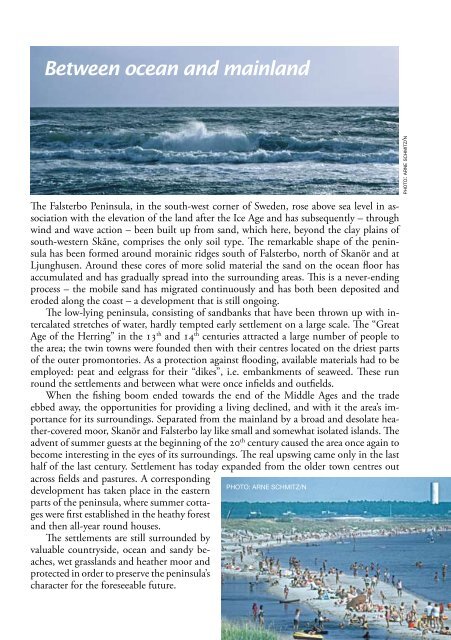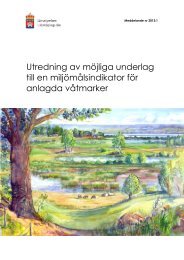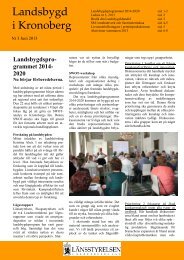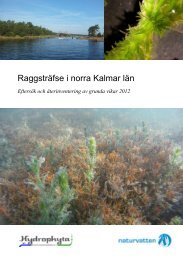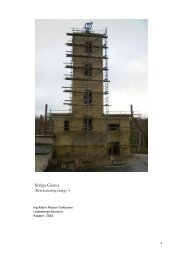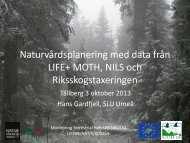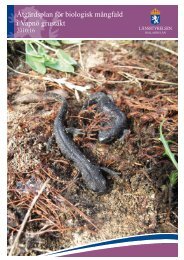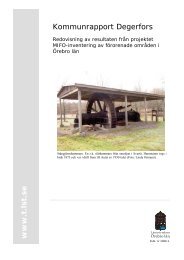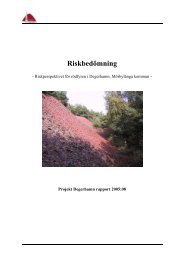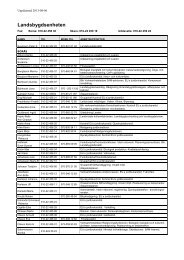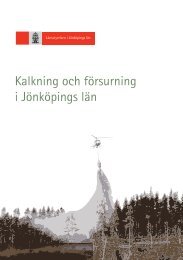The Falsterbo Peninsula
The Falsterbo Peninsula
The Falsterbo Peninsula
Create successful ePaper yourself
Turn your PDF publications into a flip-book with our unique Google optimized e-Paper software.
Between ocean and mainland<br />
<strong>The</strong> <strong>Falsterbo</strong> <strong>Peninsula</strong>, in the south-west corner of Sweden, rose above sea level in association<br />
with the elevation of the land after the Ice Age and has subsequently – through<br />
wind and wave action – been built up from sand, which here, beyond the clay plains of<br />
south-western Skåne, comprises the only soil type. <strong>The</strong> remarkable shape of the peninsula<br />
has been formed around morainic ridges south of <strong>Falsterbo</strong>, north of Skanör and at<br />
Ljunghusen. Around these cores of more solid material the sand on the ocean floor has<br />
accumulated and has gradually spread into the surrounding areas. This is a never-ending<br />
process – the mobile sand has migrated continuously and has both been deposited and<br />
eroded along the coast – a development that is still ongoing.<br />
<strong>The</strong> low-lying peninsula, consisting of sandbanks that have been thrown up with intercalated<br />
stretches of water, hardly tempted early settlement on a large scale. <strong>The</strong> “Great<br />
Age of the Herring” in the 1 th and 14 th centuries attracted a large number of people to<br />
the area; the twin towns were founded then with their centres located on the driest parts<br />
of the outer promontories. As a protection against flooding, available materials had to be<br />
employed: peat and eelgrass for their “dikes”, i.e. embankments of seaweed. <strong>The</strong>se run<br />
round the settlements and between what were once infields and outfields.<br />
When the fishing boom ended towards the end of the Middle Ages and the trade<br />
ebbed away, the opportunities for providing a living declined, and with it the area’s importance<br />
for its surroundings. Separated from the mainland by a broad and desolate heather-covered<br />
moor, Skanör and <strong>Falsterbo</strong> lay like small and somewhat isolated islands. <strong>The</strong><br />
advent of summer guests at the beginning of the 0 th century caused the area once again to<br />
become interesting in the eyes of its surroundings. <strong>The</strong> real upswing came only in the last<br />
half of the last century. Settlement has today expanded from the older town centres out<br />
across fields and pastures. A corresponding<br />
development has taken place in the eastern<br />
parts of the peninsula, where summer cottages<br />
were first established in the heathy forest<br />
and then all-year round houses.<br />
<strong>The</strong> settlements are still surrounded by<br />
valuable countryside, ocean and sandy beaches,<br />
wet grasslands and heather moor and<br />
protected in order to preserve the peninsula’s<br />
character for the foreseeable future.<br />
PHOTO: ARNE SCHMITZ/N<br />
photo: arne schmitz/n


